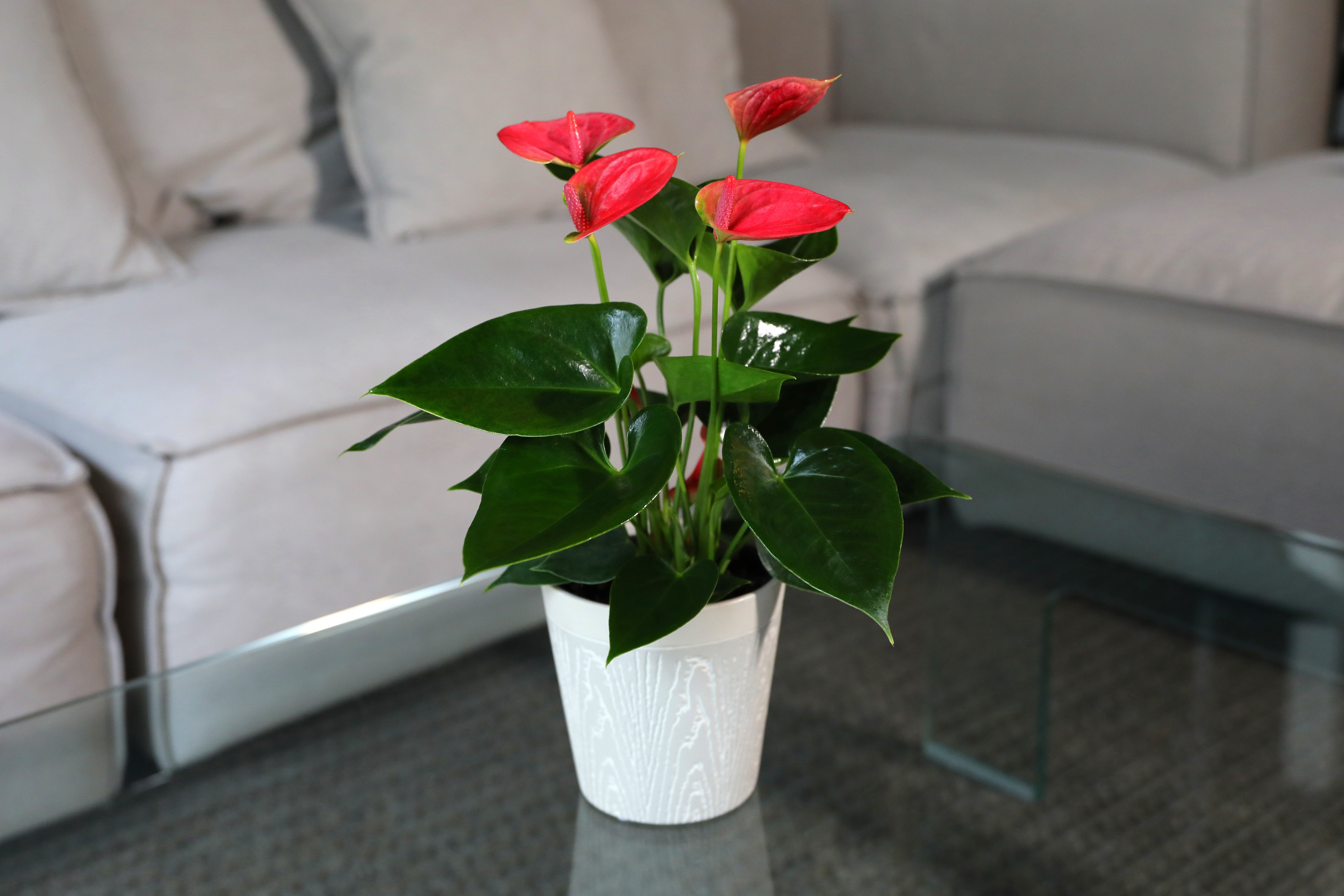Max’s Tips for Anthurium Care
The Anthurium is celebrated as the world’s longest blooming plant, and it’s also one of the easiest plants to take care of! However, even the simplest care routine has room for error, so being aware of common care mistakes is the best way to avoid them and keep your plant healthy.
This blog post covers six common Anthurium problems and how to avoid and recover from them!
Overwatering
One of the most common anthurium care mistakes is overwatering. We recommend watering with 6 ice cubes or ½ cup of water per week, and our anthurium will do best when the soil has a chance to partially dry between waterings. Too much or too frequent watering can lead to root rot, which could severely affect the long-term health of your plant.
If you do overwater, try cutting away any rotted roots and allowing the soil to dry most of the way before watering again. It may be possible to recover if you catch root rot early. Also, dump excess water from the pot regularly.
Underwatering
However, on the other end of the spectrum, it’s also important to make sure your anthurium is getting enough water and not completely drying out. If this happens, you may need to soak the root ball for rehydration. Luckily, if you’re sticking to your once-a-week watering schedule, underwatering shouldn’t be a problem.
Pests
While pests tend to be a much more substantial problem for outdoor anthuriums, your indoor plant does face some pest infestation risks. Since anthuriums have such thick leaves, they don’t generally attract chewing pests; rather, they are more likely to be bothered by sucking insects that feed on plant sap. While the best thing you can do is to keep a close eye on your plant so any potential infestations are caught early, wiping down the leaves with a Pyrethrin-based insecticide or using a horticultural soap or oil spray can help control the problem.
Sunburnt Leaves
Yes, it’s true: your anthurium can get sunburned. That’s why it’s best to keep your plant in a bright room, but avoid placing it in direct sunlight. If you notice your plant may be getting too much sun, move it to a better location immediately. Sunburn looks like black or brown spots on the leaves.
Low Temperature and Humidity
Since anthuriums are tropical plants, they grow best in rooms with temperatures higher than 55 degrees (though, ideally between 70 and 90 degrees) and with at least 80 percent humidity. Because of this, many people keep anthuriums in their bathroom, provided they get enough light. However, if you want to display your anthurium elsewhere in your home and are concerned about low humidity, you can also run a humidifier to help.
Failing to Repot
Your anthurium will likely need to be repotted every two to three years. Failing to do this when your plant needs it could stunt the growth and negatively affect its overall health. Keep a close eye on your plant and look for signs it has outgrown its current pot, such as roots growing through the drainage holes or circling the surface of the potting mixture. Fresh potting soil will also help provide an influx of nutrients for the plant.
With these six anthurium care mistakes in mind, you can avoid the biggest potential health risks to your plant and enjoy its long-lasting beauty for years to come.









